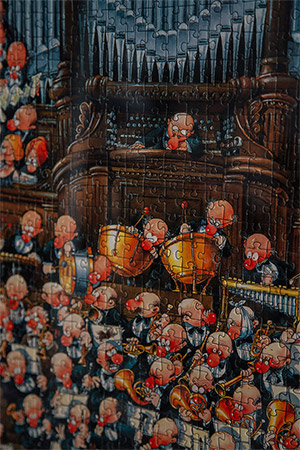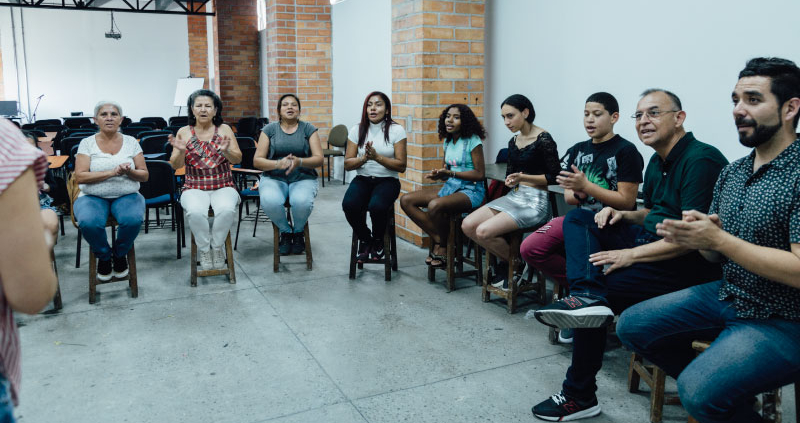Bibiana Ordónez between notes, plans and puzzles
Bibiana Ordóñez She is the first harpist the orchestra has. At home, no one aspired for him to be a musician, as a consequence he decided to become an architecture and engineering draftsman at the Universidad Colegio Mayor de Cundinamarca. From an early age he demonstrated skills in manual activities, assembling cards, building models, outlining plans, assembling, he was even passionate about “seeing a whole mess to build”. But he always knew that something was missing in his life, “what truly fills my heart” and in the second semester, against all odds, he studied music at the National University. Bibiana remembers that between models and scores she transcended her busy student days, but with the commitment to “do things until the end” managed to complete both studies.
 “Do things until the end” She also uses it in one of her biggest hobbies during confinement – putting together puzzles – because for the harpist it has a calming effect and focuses all her attention. “Until I find the token I don't stop; When I fit it I feel like I am part of a world. For me, living in society and making music are like putting together a puzzle, because despite the diversity of shapes, each piece is important and when they are put together they all become important, they fulfill a goal and harmony is manifested.”, says Bibiana while showing her puzzle of an orchestra, ready to frame, by artist Guillermo Mordillo.
“Do things until the end” She also uses it in one of her biggest hobbies during confinement – putting together puzzles – because for the harpist it has a calming effect and focuses all her attention. “Until I find the token I don't stop; When I fit it I feel like I am part of a world. For me, living in society and making music are like putting together a puzzle, because despite the diversity of shapes, each piece is important and when they are put together they all become important, they fulfill a goal and harmony is manifested.”, says Bibiana while showing her puzzle of an orchestra, ready to frame, by artist Guillermo Mordillo.
He says that his greatest sources of inspiration come from the deepest feelings, from the relationship with nature, from daylight, heat and contact with animals; It is so much so that he lives with Manolo and Lupita, his two cats, rescued from the streets of Bogotá, and Colores, his dog, adopted from the Los Angeles Canine Rescue and Adoption Center; place where she is a volunteer and godmother to two other stray dogs.
His love for music began at the age of 10. He wanted piano or flute but there was no longer a place available at the Conservatory of the National University of Colombia. “He played the harp because it starts with A.” Bibiana remembers when she saw the plucked string instrument first on the list, and with space available. From then on he undertook his life and his studies in the harp around the world. Due to her talent and discipline, she won several scholarships to strengthen her technical knowledge, in Paris, at the Higher Regional Conservatory and in Spain, with a scholarship from the Spanish Agency for International Cooperation with the harpist Miriam del Río of the Symphony Orchestra of the Principality of Asturias, among others. others.
She has had the opportunity to work in the National Symphony Orchestra of Colombia, the Bogotá Philharmonic Orchestra and the National Opera Theater of Chile, and in the Medellín Philharmonic Orchestra she has been part of its official staff since 2013. Since 2009, Bibiana has taught harp classes every year. Monday to four students from the National University of Colombia, who during confinement have done so virtually.















